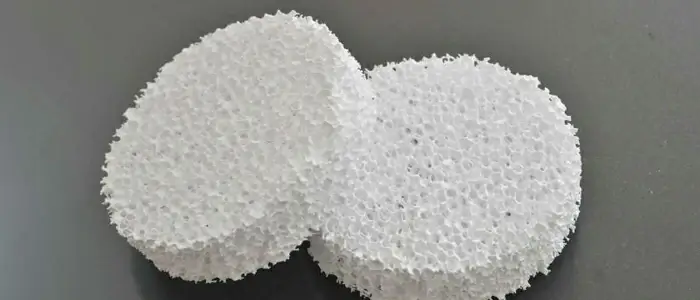If you’ve landed on this page, you’re probably asking a critical question for your project: Is alumina ceramic porous?
In my years of working with advanced ceramics, this is one of the most common and important questions I get. The short answer is: it depends entirely on how it’s manufactured.
Alumina ceramic isn’t a one-size-fits-all material. It can be engineered to be incredibly dense and gas-tight, or highly porous and permeable. Understanding this distinction is the key to selecting the right material for your application and avoiding costly mistakes.
Let’s break down the two main types.
Dense Alumina Ceramic: The Impermeable Workhorse
When most people think of high-performance ceramics, they are thinking of dense alumina. This is the material we use for demanding applications where strength, wear resistance, and impermeability are non-negotiable.
How is it made? Through a process called high-temperature sintering. Fine alumina powder is pressed and then fired at temperatures often exceeding 1600°C. This process causes the particles to fuse together completely, eliminating nearly all the voids between them.
Key Characteristics:
-
Extremely Low Porosity: Typically less than 2%.
-
Gas and Liquid Tight: It forms an excellent barrier.
-
High Mechanical Strength and Hardness:
-
Superior Wear Resistance:
-
Excellent Electrical Insulation:
From my experience, this is the go-to material for components like alumina ceramic substrates for electronics, wear-resistant alumina plates, seal rings, cutting tools, and even biomedical implants like hip joint bearings. If your application cannot tolerate any leakage or contamination, you need dense alumina.
Porous Alumina Ceramic: The Engineered Filter
Porous alumina is not a mistake; it’s a masterpiece of material engineering. Its structure is deliberately created to serve specific functions that dense alumina cannot.
How is it made? Manufacturers use techniques like partial sintering or adding pore-forming agents (like polymers or starch) that burn out during firing, leaving behind a controlled network of pores.
Key Characteristics:
-
Controlled Porosity: Can range from 20% to over 90%.
-
Permeable: Allows gases and liquids to flow through.
-
High Surface Area:
-
Lower Thermal Conductivity:
In my work with clients, I’ve seen porous alumina shine in applications that leverage its unique structure. It’s indispensable as a molten metal filter, a catalyst support in chemical reactors, a thermal insulator, and as a scaffold for bone tissue engineering where the pores allow for biological in-growth.
How to Choose: Dense vs. Porous Alumina
So, how do you decide? Ask yourself these key questions:
-
Does it need to seal or contain? → Choose Dense Alumina.
-
Does it need to filter or allow flow? → Choose Porous Alumina.
-
Is high mechanical strength the top priority? → Choose Dense Alumina.
-
Is high surface area for a reaction critical? → Choose Porous Alumina.
The Bottom Line
To finally answer your question: Is alumina ceramic porous?
Yes, alumina ceramic can be porous, but the high-performance grade used in most industrial applications is specifically engineered to be dense and non-porous.
The true power of this versatile material lies in our ability to tailor its structure—from a solid, impervious wall to a delicate, open-cell foam. By understanding this fundamental difference, you can confidently specify the right type of alumina ceramic to ensure the success and longevity of your product.
Looking for a reliable alumina ceramic supplier? Ensure they ask detailed questions about your application’s requirements for porosity, strength, and chemical resistance to guide you to the perfect material solution.


